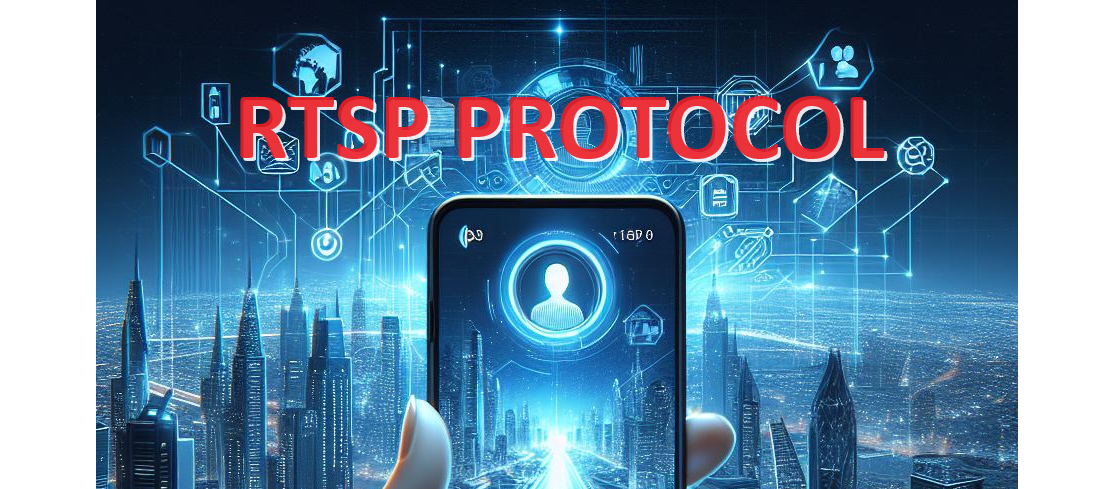In the dynamic landscape of digital communication and video streaming, Real Time Streaming Protocol (RTSP) plays an important role. Understanding its nuances and applications is crucial for anyone venturing into the field of real-time video transfer. In this comprehensive guide, we’ll uncover the intricacies of RTSP, explore its features, and delve deeper into its applications across various industries.
Understanding the RTSP protocol
RTSP, or Real Time Streaming Protocol , is a network control protocol designed to control streaming media servers. It operates on top of the Transmission Control Protocol (TCP) and is used to establish and control media sessions between endpoints. Unlike file downloading, where the entire file is transferred before playback, RTSP allows streaming of media content in real time.
How RTSP works
At the heart of real-time streaming, RTSP operates on a client-server model, facilitating communication between the user’s device (client) and the server hosting the media content. The complex dance between these two entities is what enables the seamless delivery of real-time streaming content.
Client-server interaction
- Client initialization:
- The process begins when the client sends an RTSP request to the server, expressing the desire to establish a connection for streaming.
- This initial exchange includes crucial information such as the media type, the desired transport protocol, and the specifics of the requested stream.
- Server response:
- Upon receiving the client’s request, the server responds with the necessary information to start the streaming session.
- This response includes details such as the server address, the chosen transport protocol, and any additional parameters required to establish a successful connection.
- Establishing the session:
- With the information provided by the server, the client establishes a session to start the streaming process.
- The session acts as a virtual connection, allowing the exchange of control messages and the transmission of multimedia content.
Control playback
- Play, pause and stop controls:
- Once the session is established, the client can send commands to the server to control playback. Common commands include play, pause, and stop.
- These controls allow the user to have real-time control over the streaming experience, making RTSP suitable for applications where interactivity is essential.
- Search in the feed:
- RTSP supports the ability to search within the media stream. Users can jump to specific points in the content without having to wait for the entire file to download.
- This search functionality improves the user experience, especially in scenarios where users want to advance or revisit specific segments of the feed.
Playback controls may be available when viewing a video file remotely. On the other hand, in several cases, such as viewing a surveillance camera, only real-time reading is available.
Disassembly phase
- Closing of the session:
- When the user ends the streaming session or exits the application, the client sends a unmount request to the server.
- The server acknowledges the unmount request and the session is gracefully closed, freeing up resources and concluding the streaming experience.
Video and audio protocols in RTSP
Real Time Streaming Protocol (RTSP) serves as a versatile channel for real-time communication and media streaming, supporting a variety of video and audio protocols to meet various needs. Here’s a closer look at how different video and audio protocols integrate with RTSP:
Video protocols:
1. H.264 (AVC) et H.265 (HEVC) :
- Integration with RTSP: RTSP seamlessly integrates with H.264 and H.265, providing efficient transmission of high-quality video streams. These widely adopted video codecs ensure compatibility with a wide range of devices, making them suitable for RTSP-based applications such as video surveillance and live streaming.
2. VP9 and AV1:
- Integration with RTSP: Although less common than H.264 and H.265, VP9 and AV1 can be used with RTSP, providing alternatives for video streaming. These open source codecs can be used for specific use cases where royalty-free solutions or improved compression efficiency are priorities.
Audio protocols:
1. AAC (advanced audio coding) and MP3:
- Integration with RTSP: RTSP supports popular audio codecs such as AAC and MP3 for streaming audio content. These codecs ensure high-quality audio playback and are commonly used in RTSP applications such as online conferencing and music streaming.
2. Opus:
- Integration with RTSP: Opus, known for its efficiency in real-time communication, seamlessly integrates with RTSP for applications requiring high-quality, low-latency audio streaming. It is particularly suitable for RTSP services involving voice over IP (VoIP) or online gaming.
3. Dolby Digital and DTS:
- Integration with RTSP: Although Dolby Digital and DTS are more commonly associated with home entertainment systems, they can be integrated with RTSP streams for applications where immersive, high-quality audio experiences are desired, such as live events or cinema streaming.
In RTSP, the choice of video and audio protocols depends on factors such as the nature of the content, bandwidth considerations, and targeted user devices. The flexibility of RTSP allows it to adapt to the different requirements of different industries, from surveillance systems requiring efficient video compression to online gaming platforms requiring low latency audio communication.
When embarking on RTSP-based projects, selecting the appropriate combination of video and audio protocols is crucial to delivering an optimal streaming experience tailored to your specific use case. Stay tuned for advancements in these protocols as they continue to evolve, influencing the media streaming landscape over RTSP.
RTSP vs other protocols
Comparing RTSP with other protocols like HTTP and FTP reveals its unique advantages. Unlike HTTP, which is designed for file transfer, RTSP is designed for live streaming. Its ability to control playback makes it more suitable for applications where real-time interaction is crucial.
RTSP Use Cases
Real Time Streaming Protocol (RTSP) has become an integral part of various industries, providing a versatile solution for scenarios that demand real-time communication, interactivity and smooth streaming. Here are some important use cases where RTSP plays a crucial role:
1. Monitoring systems:
- RTSP is widely used in surveillance systems for streaming and live video monitoring. Security cameras and IP cameras often use RTSP to provide real-time feeds to security personnel, enabling rapid response to potential threats.
2. Videoconferencing:
- In the field of online meetings and video conferencing, RTSP guarantees smooth and interactive communication. The protocol’s ability to support real-time streaming improves the quality of video conferences, allowing participants to engage seamlessly.
3. Multimedia broadcast:
- RTSP is a cornerstone in the world of media streaming. It facilitates the delivery of audio and video content over the Internet, powering platforms such as YouTube Live, Twitch and other live streaming services.
4. Interactive games:
- Online gaming platforms leverage RTSP for real-time communication between players and servers. Whether it’s a massively multiplayer online game (MMOG) or a fast-paced first-person shooter, RTSP ensures minimal latency, delivering a responsive gaming experience.
5. VoIP (Voice over Internet Protocol):
- RTSP finds applications in VoIP services, enabling real-time audio streaming for voice and video calls. The protocol ensures seamless and delay-free conversation, thereby improving the overall user experience in communication applications.
6. Educational Streaming:
- Educational institutions and online learning platforms use RTSP to stream live lectures, webinars, and interactive educational content. The real-time nature of RTSP improves engagement between educators and learners.
7. Broadcast and Live Events:
- RTSP supports live streaming, allowing real-time transmission of events such as sports matches, concerts and newscasts. Broadcasters use RTSP to reach a global audience with minimal delay.
8. Telemedicine:
- In telemedicine applications, RTSP facilitates real-time video streaming for remote medical consultations. The protocol guarantees an immediate and high-quality exchange of visual information between healthcare professionals and patients.
9. Industrial monitoring:
- Industries leverage RTSP for real-time monitoring of critical processes and machines. It provides a reliable way to stream video from cameras installed in industrial environments, making monitoring and maintenance easier.
10. Interactive advertising:
- RTSP supports interactive advertising campaigns by delivering engaging content in real-time to users. This use case is prevalent in digital signage, interactive displays, and other advertising media.
Essentially, RTSP’s versatility makes it an invaluable tool in scenarios where real-time communication, interactivity, and low-latency streaming are paramount. As technology continues to advance, the RTSP protocol will likely find new applications, strengthening its role in the ever-changing multimedia communications landscape.
Conclusion
In the dynamic world of real-time streaming, Real Time Streaming Protocol (RTSP) serves as a beacon of innovation, opening up possibilities across various industries. RTSP is not just a protocol; it is an enabler of seamless communication, an enabler of interactive experiences, and a cornerstone for industries that demand the immediacy of real-time streaming. As technology continues to evolve, so does the importance of RTSP.
For viewing rtsp streams, you can try our RTSP Player.



